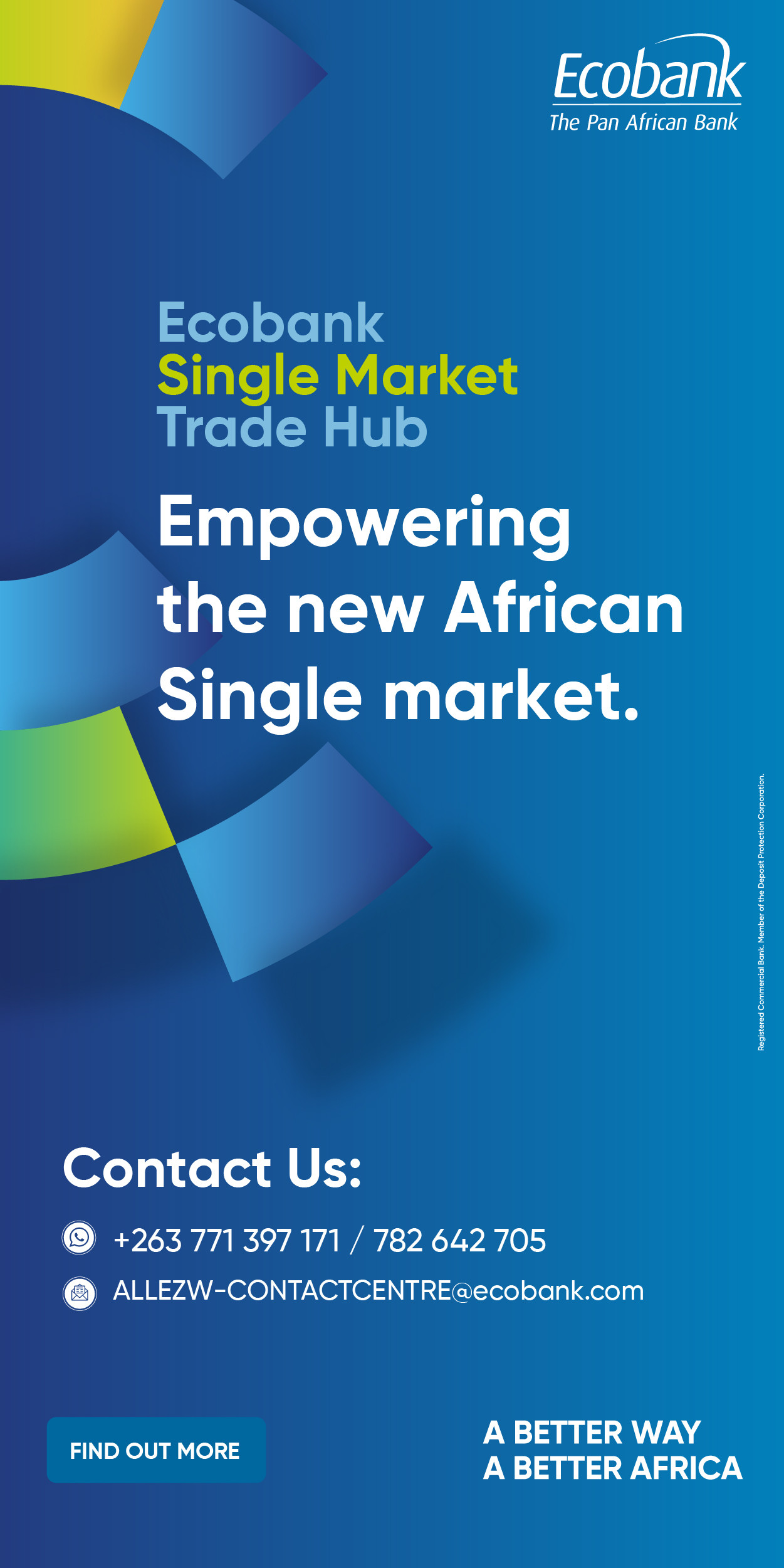- Record-Breaking: Turnover of $58.5 million driven by local investors
- Market capitalisation climbed to $1.29 billion, with VFEX All Share Index rising 5.99% to close at 110.32 points
- VFEX's high turnover-to-market-cap ratio of about 4.5% signals active trading and efficient capital flow, driven by local investors who accounted for 96.68% of trades
Harare- The Victoria Falls Stock Exchange (VFEX) posted a remarkable Q1 2025, driven by local investors who powered a record-breaking turnover of $58.5 million and a historic daily high of $40.1 million on February 26.
With a total market turnover of $58.5 million and a historic daily high of $40.1 million on February 26, VFEX showcased deepening liquidity and growing confidence in its USD-denominated platform.
The VFEX All Share Index rose 5.99% to close at 110.32 points, while market capitalisation climbed to $1.29 billion, cementing the bourse’s role as a cornerstone of Zimbabwe’s capital markets.
Local investors were the backbone of VFEX’s Q1 performance, capitalising on the exchange’s stability and tax incentives, including zero capital gains tax on share disposals.
Their enthusiasm fueled a quarterly turnover of $58.5 million, a 383% leap from Q1 2024’s $12.1 million.
The standout moment came on February 26, when trading volume hit 1.13 billion shares, generating $40.1 million in a single day surpassing the prior record of $17.6 million set in December 2024.
Demand for export-oriented stocks, particularly in mining and financial services, underpinned this surge, as investors sought to hedge against local currency volatility with VFEX’s forex-based securities.
Market capitalization grew 5.7% even after the delisting of National Foods Holdings Limited, the bourse’s first exit. The remaining 15 listings, including one debt security, supported this growth, though the bond market saw no trades in Q1.
Local investors’ strategic bets on blue-chip counters and VFEX’s hard-currency ecosystem drove these gains, positioning the exchange as a haven for wealth preservation.
Foreign investors played a smaller role, accounting for 3.32% of trades and posting a net sell position of $3.8 million. This cautious engagement suggests selective profit-taking amid Zimbabwe’s liquidity challenges and global uncertainties.
Despite its achievements, VFEX faces challenges, including limited foreign participation and dormant debt securities trading. The delisting of a key counter reflects the need for new listings to sustain growth.
However, opportunities abound, with plans for commodities trading through partnerships with miners and logistical players signaling a bold step forward. Initiatives to boost secondary market activity and develop a yield curve for unlisted debt could further enhance liquidity.
Looking ahead, VFEX’s Q1 2025 performance highlights its potential to thrive in a complex economic landscape. Local investors’ dominance, paired with record turnover and index gains, sets a strong foundation for growth.
By expanding listings, deepening foreign engagement, and launching commodities trading, VFEX is poised to build on this momentum, offering a compelling platform for investors seeking stability and opportunity in Zimbabwe’s markets.
Contextualisation
To contextualize VFEX’s performance, it’s worth comparing its metrics with other prominent African stock exchanges, including the Johannesburg Stock Exchange (JSE), Nigerian Exchange (NGX), Nairobi Securities Exchange (NSE), and Casablanca Stock Exchange (CSE), focusing on market size, turnover, investor participation, and structural advantages.
VFEX’s $1.29 billion market capitalisation is modest compared to Africa’s heavyweights. The JSE, Africa’s largest bourse, boasts a market cap of approximately $1.07 trillion, dwarfing VFEX with 354 listed companies versus VFEX’s 15. The NGX, with a market cap of around $37 billion, supports 152 listings, while the NSE in Kenya holds $13.6 billion with 65 companies.
The CSE in Morocco, with a market cap of roughly $71 billion, lists 81 securities. VFEX’s smaller scale reflects its youth, launched in 2020 and its niche as a USD-denominated exchange targeting Zimbabwe’s hard-currency needs, unlike the broader, more mature markets of its peers.
Turnover highlights VFEX’s growing liquidity despite its size. Its $58.5 million Q1 turnover, including a record $40.1 million day, translates to a turnover-to-market-cap ratio of about 4.5%, signaling active trading for a small bourse. In contrast, the JSE’s daily turnover averages $1.2 billion, but its ratio is lower at around 1.3% due to its massive market cap.
NGX’s turnover in Q1 2025 is estimated at $900 million, yielding a ratio of 2.4%, while NSE’s $150 million turnover gives a higher 1.1%. CSE’s turnover data is less granular, but its $200 million quarterly estimate suggests a 0.3% ratio. VFEX’s high ratio indicates efficient capital flow, driven by local investors who accounted for 96.68% of trades, unlike the JSE and NGX, where foreign investors often dominate, contributing 30-40% of activity.
Investor participation reflects VFEX’s local tilt. Foreign investors made up just 3.32% of trades, with a net sell position of $3.8 million, reflecting caution amid Zimbabwe’s economic challenges.
The JSE and NGX, by contrast, attract significant foreign inflows due to their global integration and diverse listings, though both saw net outflows in Q1 2025 amid global rate hikes. NSE’s foreign participation hovers at 20%, bolstered by firms like Safaricom, while CSE benefits from Morocco’s stable currency, drawing 15% foreign trades. VFEX’s tax incentives aim to boost foreign interest, but liquidity constraints limit its pull compared to peers with deeper markets.
Structurally, VFEX’s USD-based trading shields it from Zimbabwe’s currency volatility, a unique edge over the ZSE and even NGX, which grapple with naira depreciation. The JSE, trading in rand, faces less currency risk due to South Africa’s stable forex market, while NSE’s shilling-based trades expose it to moderate volatility. CSE’s dirham peg to the euro offers stability akin to VFEX’s dollar peg.
However, VFEX’s 15 listings, including one dormant debt security, pale against JSE’s diversified sectors, NGX’s oil and banking focus, NSE’s telecom strength, and CSE’s industrial depth. VFEX’s delisting of National Foods Holdings in Q1 highlights retention challenges, unlike the JSE, which added 16 exchange-traded notes in 2025.
VFEX’s challenges include its small size and limited foreign appeal, exacerbated by Zimbabwe’s forex shortages. The JSE faces delisting pressures, with firms citing high compliance costs, while NGX contends with oil price swings. NSE struggles with low liquidity, and CSE navigates regional political risks.
VFEX’s growth plans, like commodities trading, mirror NSE’s derivatives push and NGX’s blockchain trials but lag JSE’s advanced fintech integration. Still, VFEX’s special economic zone status in Victoria Falls aligns with CSE’s Casablanca Finance City model, offering tax breaks that could rival Mauritius’s offshore hub if scaled.
Equity Axis News





